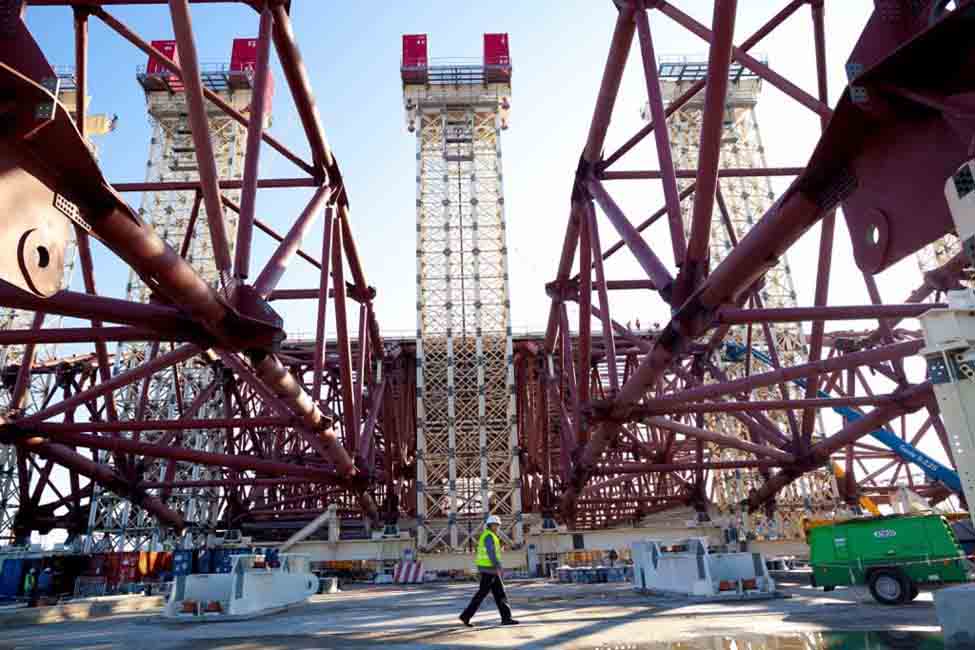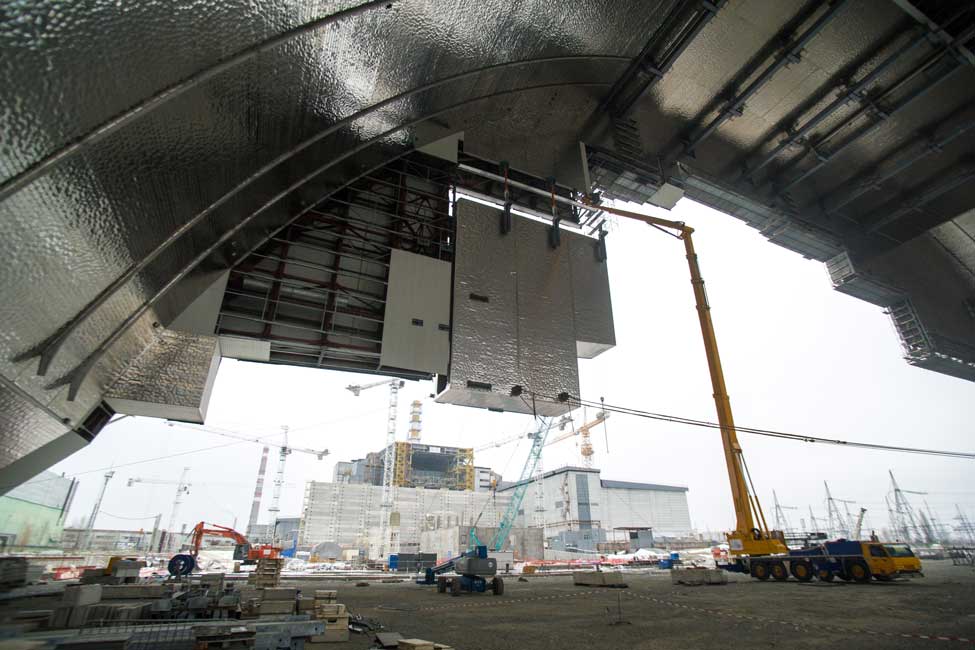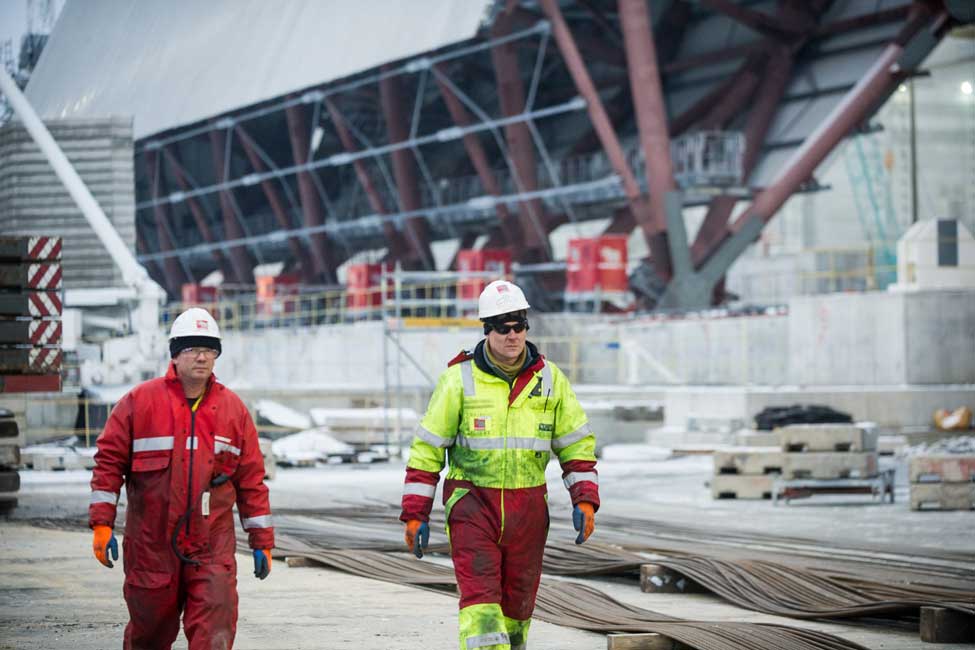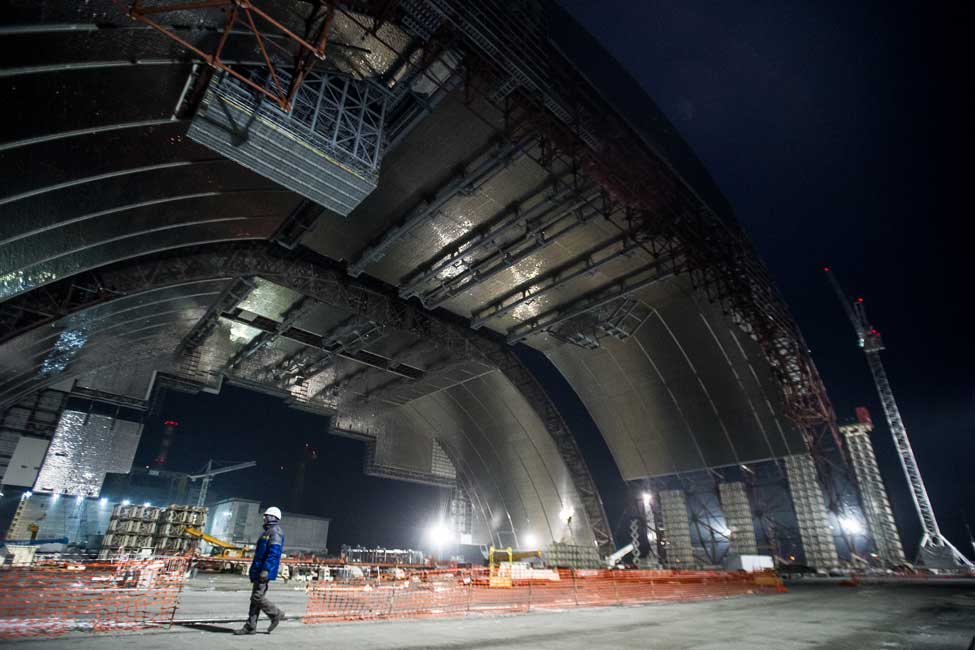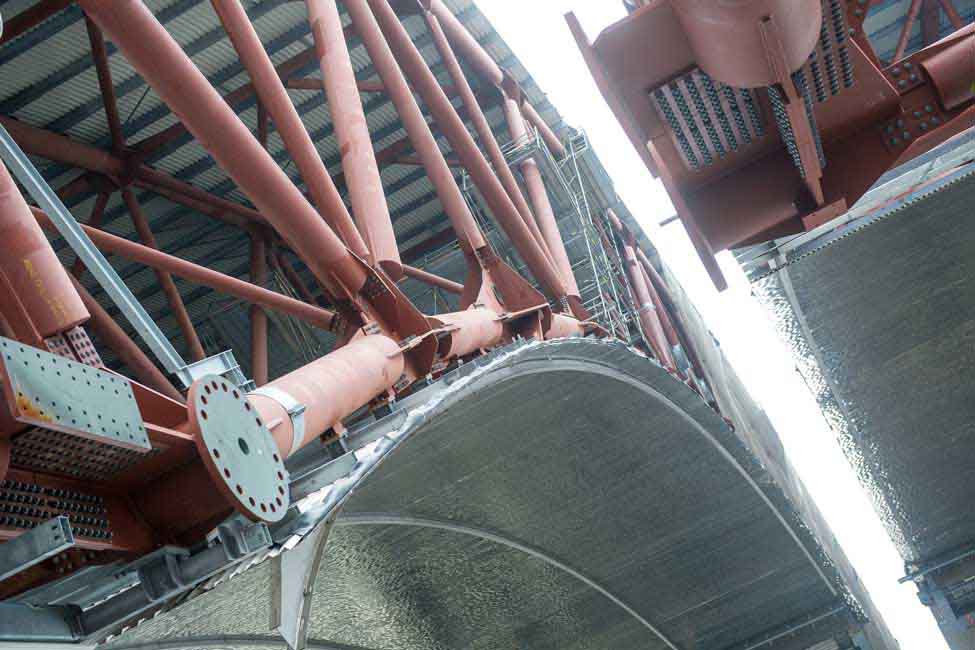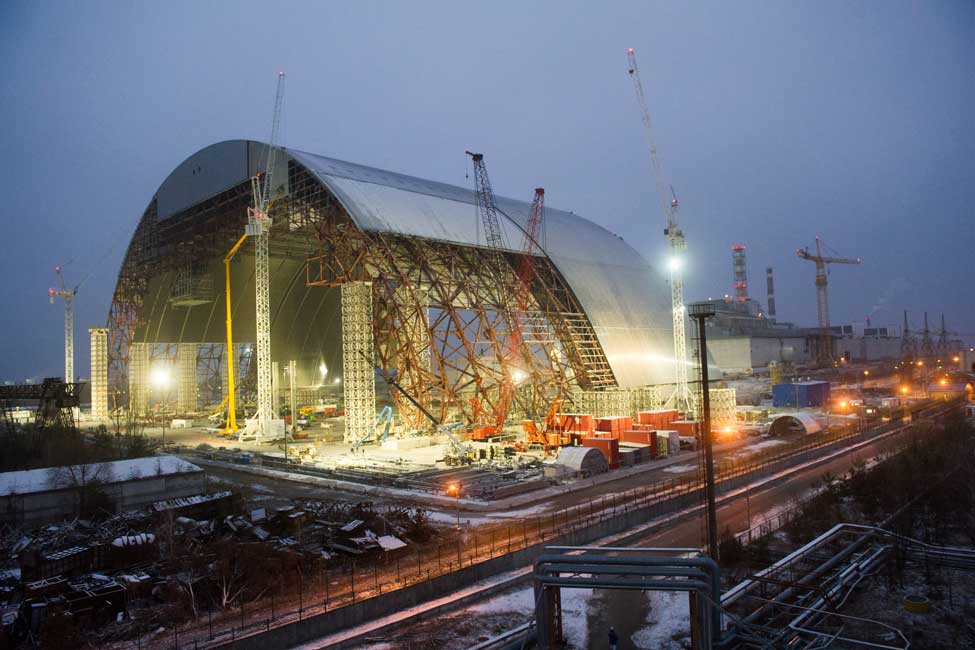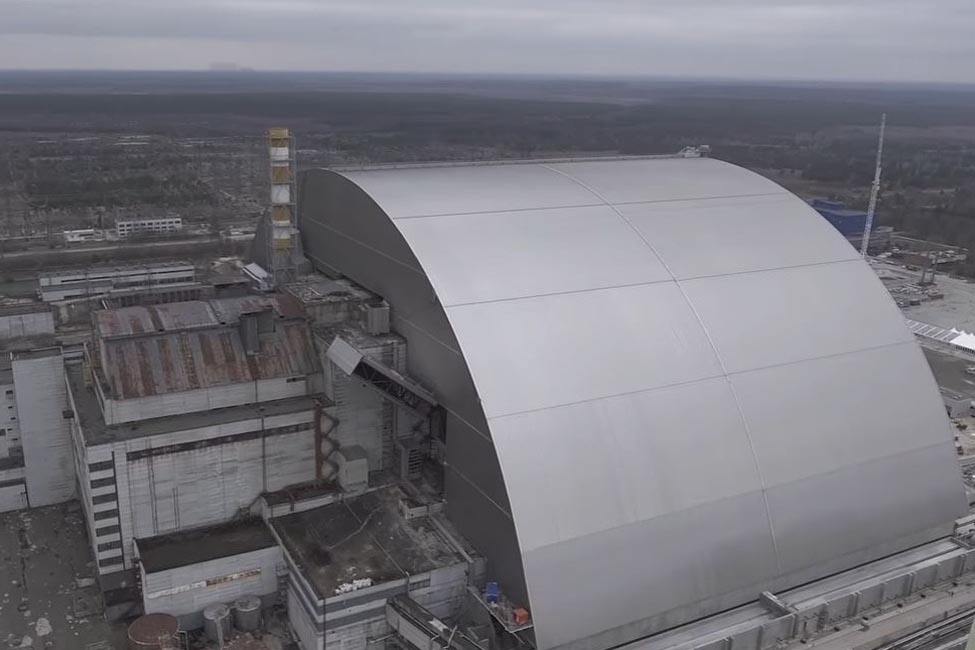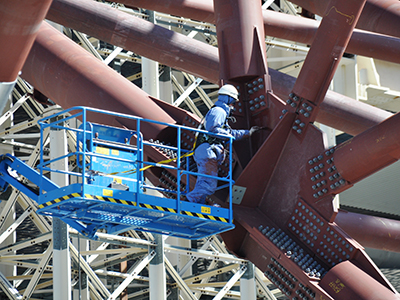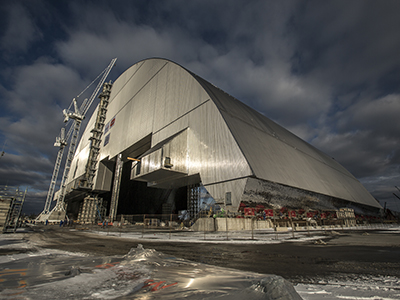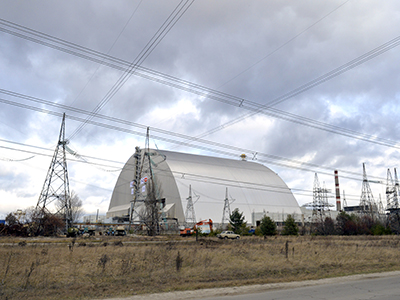In 1986, a reactor at the Chernobyl nuclear power plant in Ukraine exploded in what was history's worst nuclear disaster. The destroyed reactor, open to the elements through the gaping hole in the roof, was an unprecedented environmental risk.
Within months, Soviet crews contained the radioactive wreckage inside a temporary shelter, a 21-story-tall "sarcophagus." But there were many gaps, and most of the sarcophagus wasn't secured to the underlying structure, leaving the enclosure vulnerable to leaking rainwater, settling, and earthquakes.
An international effort grew to address the problem. In the latter part of the 1990s, after we helped with a short-term fix to stabilize the sarcophagus, a Bechtel-led team designed what's known as the New Safe Confinement (NSC) structure, the heart of a broader, longer-term Shelter Implementation Plan.
About the Confinement Shelter
The $1.7 billion NSC now encloses the reactor and associated debris—as well as the sarcophagus surrounding it. The shelter provides a confined space within which unstable upper portions of the sarcophagus can be taken apart and the remaining highly radioactive material removed to a long-term storage repository. This will reduce exposure of the existing shelter to weather, and restrict the release of radioactive dust that could result from an accidental collapse beneath the new confinement. It will also provide a safe working environment for cleanup personnel.
Inside the project
The entire Shelter Implementation Plan, the heart of which is the NSC structure, cost some $2.7 billion. The funding—contributed by more than 40 nations—was managed by the European Bank for Reconstruction and Development (EBRD). When EBRD was commissioned to manage the Chernobyl recovery funds, its managers agreed with the government of Ukraine to enlist Western experts to help manage implementation.
EBRD and plant officials selected a Bechtel-led consortium that included Battelle Memorial Institute and Electricité de France to lead the project management effort for the Shelter Implementation Plan. A French joint venture called NOVARKA constructed the massive facility. Since 1996, the Bechtel group has, among other things:
- Provided conceptual engineering, cost estimating, scheduling, and project management services
- Prepared design and procurement packages
Inside the NSC, a camera-equipped crane system will hang from the arch’s ceiling on a web of cables. Operators in a shielded control room will manipulate hoists, a drill, a jackhammer, and hydraulic shears. These tools will enable them to peel back the sarcophagus roof and sort through its highly radioactive contents.
The structure and the mechanical handling equipment that it supports are all designed to prevent radiological exposure when it becomes operational. In the meantime, our consortium found ways to minimize worker exposure to radioactivity during construction and overcome the long Ukraine winters.
The massive structure was slid into place in 2016 and, after a commissioning and testing process, turned over to Ukraine in 2019.


